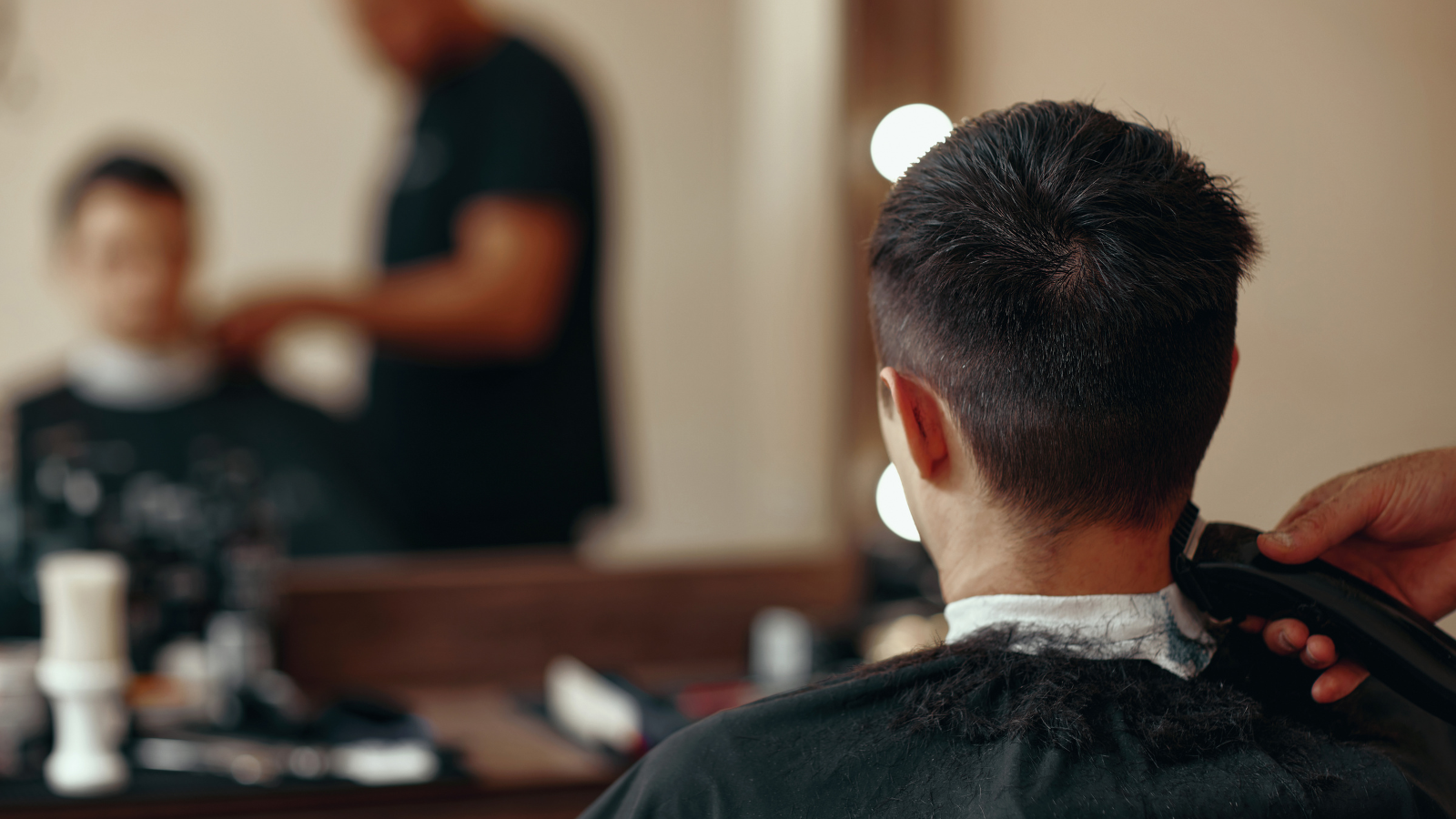Bias against men in health research: one researcher’s journey from exercise science to men’s health.
I’m an exercise scientist. Since 2008, I’ve authored over 50 peer-reviewed papers, mainly in exercise science journals. However, two of my most popular papers – both published in the past two years – have little to do with exercise. They’re about men’s health.
In 2017, I was working as a postdoctoral fellow at a neuroscience research institute. I had recently finished my PhD studies, a time when most articles I read were on my thesis topic of how of the brain and nerves adapt with strength training to make muscle stronger. However, once I became a postdoctoral researcher, I had time to read more broadly. I subscribed to RSS feeds for various exercise science journals, and shortly thereafter, a paper appeared in my feed that altered the trajectory of my career: “Achieving Equity in Physical Activity Participation: ACSM Experience and Next Steps.”
“The ACSM’s rationale for this focus was that females have lower physical activity rates than males because of discrimination against females that limits their “access to physical activity resources.” I found this argument unimpressive.”
The American College of Sports Medicine (ACSM) is arguably the most influential organization of exercise professionals in the United States. Its membership is comprised of academics and practitioners in fields such as exercise science, personal training, sports medicine, and public health. The ACSM influences university exercise science curricula, and its professional certifications are some of the most highly-regarded in the fitness industry. The journal where the paper was published – Medicine and Science in Sports and Exercise (MSSE) – is the ACSM’s flagship journal. It is one of the most highly ranked and historically important journals in exercise science.
In the paper, members of the ACSM’s Health Equity Committee presented a “national roadmap” for achieving “health equity” via “equity in physical activity.” By “physical activity equity” the committee meant achieving equal physical activity rates between demographic groups. The rationale behind their approach was that demographic groups who have the worst health outcomes are often the same groups who have the lowest physical activity rates. Because increased physical activity is associated with improved health, the ACSM argued that public action was necessary to create equal physical activity rates between demographic groups, which in turn would help achieve equal health outcomes between groups. However, the ACSM’s position contained numerous theoretical flaws. I first exposed these flaws in a letter and then later expanded upon my critiques in a full-length paper. One of the flaws in the ACSM’s position is what led me to men’s health research.
"life expectancy for males is shorter than for females in every country in the world. Thus […] increasing physical activity rates among girls and women […] would exacerbate the existing sex differences in mortality”
In their paper, the ACSM stated their national roadmap would focus on increasing physical activity rates among girls and women, with no explicit mention of desiring to achieve the same for boys and men. The ACSM’s rationale for this focus was that females have lower physical activity rates than males because of discrimination against females that limits their “access to physical activity resources.” I found this argument unimpressive. I was also taken aback by the lack of discussion on the importance of exercise and sports participation in the lives of boys and men. In my opinion, it was such an obvious omission that only misguided political ideology could underlie it. Moreover, if the goal of a physical activity roadmap is to achieve equal health outcomes between demographic groups, then targeting girls and women, and not boys and men, makes little sense. In the United States, life expectancy for males is 5 years shorter than for females. In fact, life expectancy for males is shorter than for females in every country in the world. Thus, to the extent the ACSM’S roadmap might succeed at increasing physical activity rates among girls and women, and improving their health, this would exacerbate the existing sex differences in mortality and other health outcomes between men and women, which the authors conveniently never mentioned.
The mortality gap statistics formed the basis of my critique of the ACSM’s rationale for targeting females but not males with their physical activity “roadmap.” Nevertheless, in writing the critique, I had wanted to provide further support for my position. Specifically, I wanted to cite a review paper that summarized men’s health issues in a data-driven way and involved comparisons of prevalence rates of various physical and mental health conditions in males and females. I had trouble finding such a paper. In my opinion, this represented a substantial hole in the public health literature. So, in 2020, I filled it.
“I presented original data showing the relative lack of attention given to the field of men’s health. For example […] the number of journals dedicated to women’s health was much greater than the number of journals dedicated to men’s health.”
I accumulated data on prevalence rates of physical and mental health conditions in which males have higher rates than females. The conditions include everything from sleep-disordered breathing to spinal cord injury to suicide. Moreover, I presented original data showing the relative lack of attention given to the field of men’s health. For example, from 1970 to 2018, the phrase “women’s health” appeared in the titles or abstracts of 14,501 biomedical research papers indexed in the PubMed database. The phrase “men’s health” appeared 1,555 times. I also found that the number of journals dedicated to women’s health was much greater than the number of journals dedicated to men’s health. Moreover, I highlighted the fact that in the United States there are no national health offices dedicated to men’s health but there are several national offices dedicated to women’s health. I titled the paper “Men’s health in the United States: a national health paradox” to point out the incongruence between the large number of health issues that men experience versus the little attention these issues are given.
“I conducted a content analysis of UN and WHO sources. […] I quantified how many Twitter accounts the UN administrates to communicate women’s issues (69 accounts) versus men’s issues (0 accounts).”
After publication, I was contacted by men’s health researchers and advocates who saw value in my work. They introduced me to theories like gamma bias and the gender empathy gap. I found the theories compelling. They seemed to make sense of my findings and provide an explanation for why organizations like the ACSM are not aware of, or choose to ignore, men’s health issues. Such theories also seemed to make sense of another observation I made around this time: the lack of attention given to boys’ and men’s issues in the World Health Organization’s (WHO) influential report, “Closing the gap in a generation: health equity through action on social determinants.” This report, which has been cited thousands of times in academics journals, includes an entire chapter on “gender equity” which does not mention boys and men. Such apparent gender bias was consistent with what I had observed from the ACSM, and I began to see certain ideological connections between these various organizations. To the extent such gender biases were legitimate, I thought someone should document them, particularly as taxpayers support the WHO and its parent organization, the United Nations (UN). I also thought such documentation should be done in a data-driven way.
So, later in 2020, I conducted a content analysis of UN and WHO sources. I examined, for example, how many reports the UN and WHO generated on women’s health versus men’s health. I quantified how many days of observance the UN dedicated to women’s issues or achievements (9 days) versus men’s issues or achievements (1 day). In another analysis, I quantified how many Twitter accounts the UN administrates to communicate women’s issues (69 accounts) versus men’s issues (0 accounts). The results pointed to a bias in discussing women’s but not men’s issues within these organizations.
“An anonymous peer reviewer, who rejected a paper in which I presented evidence […] wrote the following to me: “Data be damned, I know women are understudied and you will not convince me otherwise. Perceptions trump data.”
In the past couple of years, I’ve also ramped up my efforts in exercise science to address incorrect claims made about sex differences and gender bias. One of these efforts brought me full circle with the ACSM’s position paper. While doing my own historical research on exercise, I discovered a historical review from several years ago which contained a claim that the “first [exercise] training study” that “focused on women” in the journal Research Quarterly (an influential kinesiology journal) was published in 1975. I was almost certain this claim was untrue. To check, I downloaded the journal’s entire archives. Between 1930 and 1975, Research Quarterly published 33 female-only exercise training studies, totalling 4,960 female participants. The claim was clearly untrue. So, how did this finding bring me full circle to the ACSM’s position paper? The researcher who made the false claim is the founder of the ACSM’s Health Equity Committee and one of the authors of the ACSM’s position paper.
An anonymous peer reviewer, who rejected a paper in which I presented evidence that factors other than discrimination against women (e.g., differences in interests) likely contribute to fewer female than male participants in exercise science research, once wrote the following to me:
“Data be damned, I know women are understudied and you will not convince me otherwise. Perceptions trump data.”
Perhaps such peer reviewers think that by constructing non-objective road blocks, they will stop this research journey. They will not. Alternative routes are always available. Moreover, the correction of non-objective thinking is the journey’s fuel source.
I published the paper a few months later.
Scroll down to join the discussion
Disclaimer: This article is for information purposes only and is not a substitute for therapy, legal advice, or other professional opinion. Never disregard such advice because of this article or anything else you have read from the Centre for Male Psychology. The views expressed here do not necessarily reflect those of, or are endorsed by, The Centre for Male Psychology, and we cannot be held responsible for these views. Read our full disclaimer here.
Like our articles?
Click here to subscribe to our FREE newsletter and be first
to hear about news, events, and publications.
Have you got something to say?
Check out our submissions page to find out how to write for us.
.















































